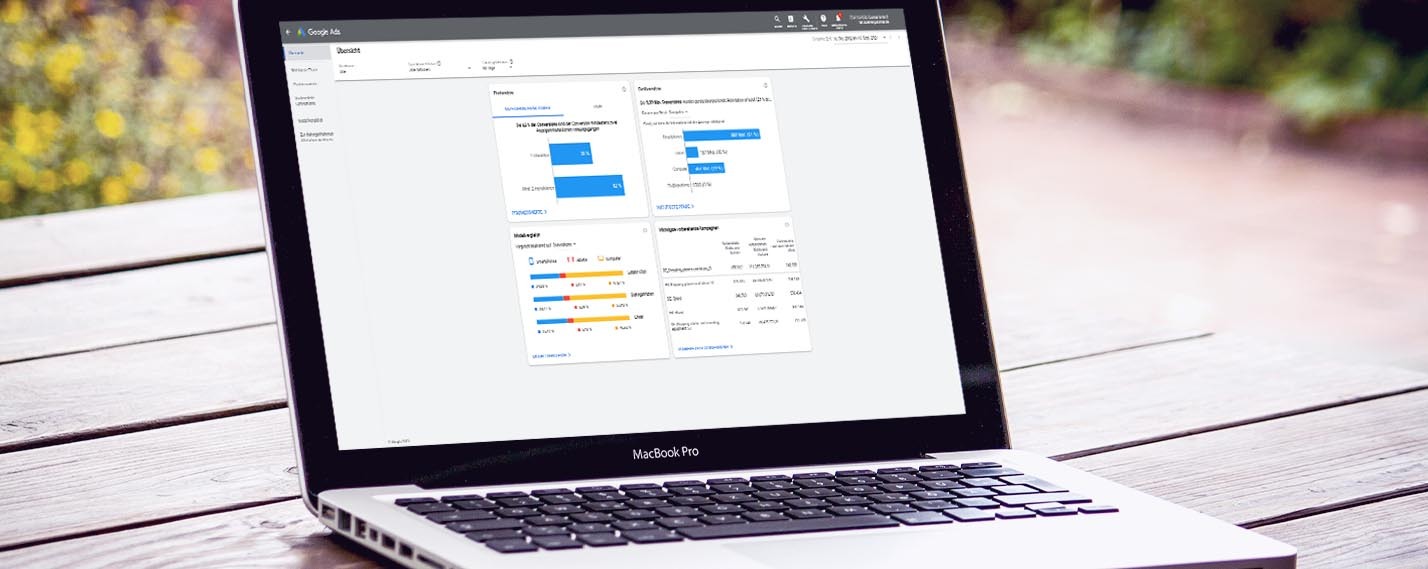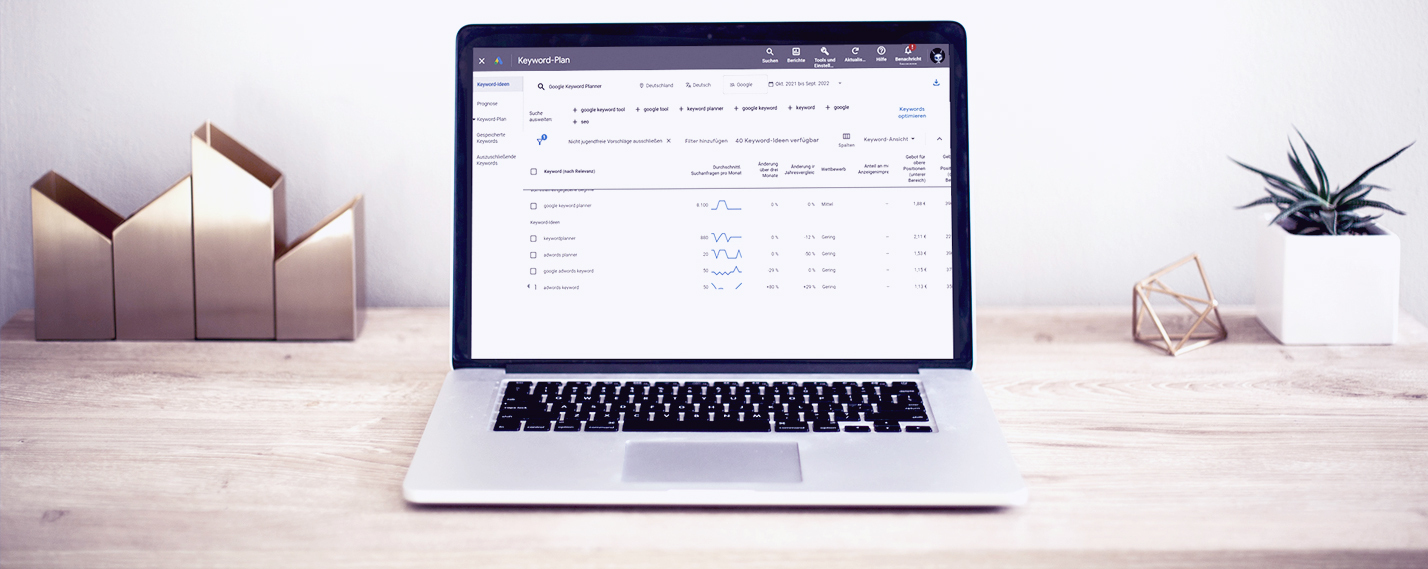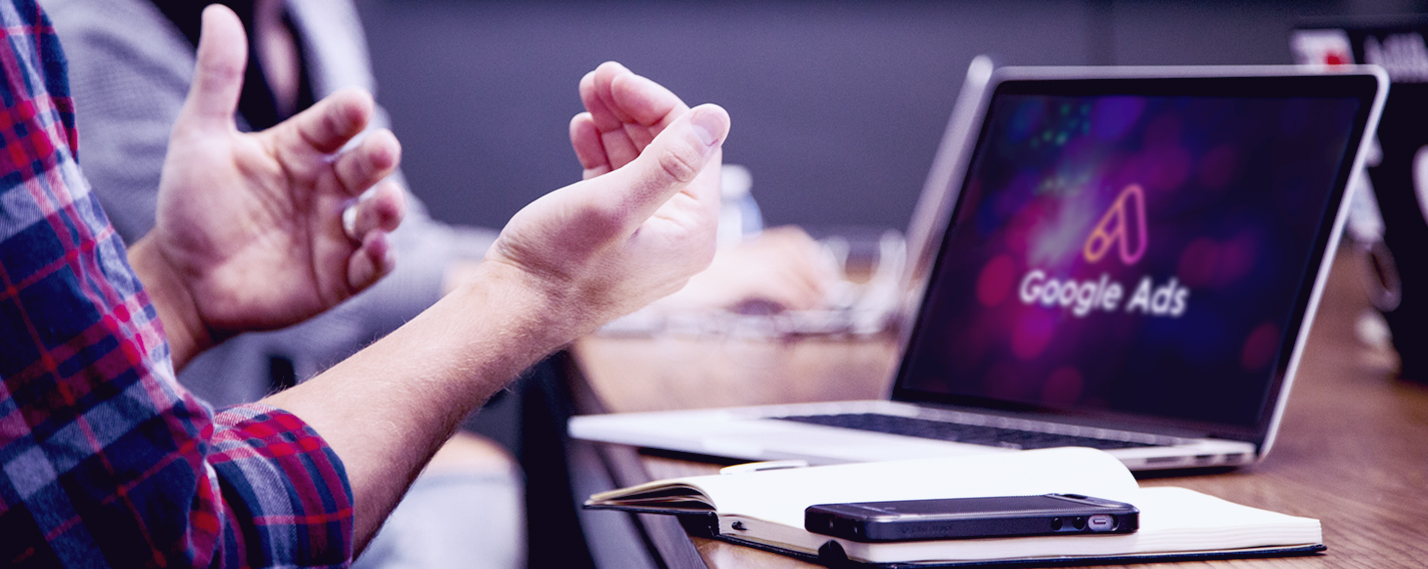You may have already noticed the messages about the switch to DDA (Data-Driven Attribution) in your Google Ads account messages via email or in the interface. With this article we would like to give you an insight into what DDA actually is and how you can recognize a possible benefit. The Auto-OptIn is not forced, but it is carried out if there is no corresponding reaction.
What is Attribution (Light Version)?
Attribution in all its glory may well be a big topic and beyond the scope of an info blog post, however we would like to share a rough insight for understanding as this will be crucial for the next steps.
In short, attribution is the part of conversion tracking that decides which ad interaction(s) was responsible for your conversion. Depending on the model, the conversion is attributed in full or proportionally to one or more ad interactions. The most commonly used model is “Last Click”, which – as the name suggests – assigns full value to the last ad interaction in the customer journey.
Explained here with a simple example:

With the “Last Click” attribution model, the complete conversion (1.0) is therefore assigned to the 2nd interaction, i.e. the shopping campaign. The display campaign is left empty-handed.
Additional attribution models are:
• First Click: Here once reversed, the display campaign gets the conversion and shopping campaign goes empty.
• Linear: The conversion is distributed equally across all ad interactions. 0.5 conversions each for Display and Shopping.
• Time based: Ad interactions that are closer in time to the conversion are assigned a greater value. The half-life is seven days. Assuming the display ad was clicked on 8 days ago, it is only worth half as much as the shopping ad. Rounded, this results in 0.33 for Display and 0.66 for Shopping.
• Position based: The 1st and last ad interactions each receive 40% share of the conversion and the remaining 20% are distributed evenly between them. In our example, there are only 2 interactions, so both campaigns receive 0.5 conversions.
DDA has been available for several years now and is Google’s flagship attribution product.
What is data-driven attribution (DDA)?
Data-driven attribution is the “newest” attribution model in Google Ads conversion tracking. With this attribution model, there is no absolute winner in the customer journey, because every interaction is evaluated. However, unlike the previous models, attribution is not distributed according to a fixed scheme, but in this model Google uses a lot of information from the account to give each interaction its actual value. Unfortunately, Google does not provide any clear information on which signals are used for this, but we can assume that it is the best of all previous models + X, the well-known Google unknown. :sweat_smile:
Why is data-driven attribution (DDA) suddenly so important?
As mentioned earlier, DDA is the newest model, but it is actually nothing new anymore. It was first introduced in 2017 and is hardly used to this day in 2021, according to Google.
The advantages of DDA clearly lie in the fact that all ad interactions are evaluated according to their actual contribution to conversion generation. Advertising measures that previously appeared insignificant thus not only gain in importance, but also reflect their actual added value in the overall strategy. Another advantage of DDA is that all interactions in the Google cosmos are recorded and processed, whereas with other models this scope is still in process.
The disadvantage with the DDA model is that, according to our measurements, the calculation of the actual contribution takes more time and thus conversion figures flow into the account more slowly. Short-term decisions could thus also happen on ambiguous bases. Until 2020, the last conversion shares of a given day were even redistributed up to 29 days later. This meant, for example, that we couldn’t finally evaluate the recently completed January until March. In 2021, Google has greatly optimized this, but not yet completely fixed it.
However, this seems to be reason enough for Google to help people help themselves and to offer a switch to DDA in an automated way.
When will the shift to data-driven attribution (DDA) occur?
Unlike previous Google Ads conversion, there is no fixed date. Any conversion action set up that is currently suitable for DDA can be addressed for a switch at any time.
If the requirements of 3,000 ad interactions and 300 conversions in the last 30 days are met, the conversion action will be placed on the DDA train and switched to DDA within the next 30 days without a manual rejection by the account manager. However, you will be informed about this by Google.
However, if you drop to 2,000 ad interactions and 200 conversions within 30 days after the switch, it will go back to your original attribution model. You would be informed by Google about this as well, but it is recommended to check your conversion actions every time you switch.
How do I decide now?
Two insights are particularly important for your decision:
Step 1: What do the Google Ads customer journeys of my users look like?
Step 2: What is the retroactive impact of the conversion?
We can find all of these answers in the Google Ads interface using the “Attribution” tools, which you can find in the upper right corner of the Google Ads interface under Tools > Measurements > Attribution.
For step 1, please take a look at the top conversion paths of the (min.) last 30 days. If your conversion paths consist almost exclusively of one interaction, then a value distribution will have little effect and deliver almost the same result with a longer attribution time.
In this example, we see that the bulk of the interactions actually require only one interaction.
Note: We have chosen the campaign type as a dimension to show you an example as anonymously as possible. However, you can go even further into detail with campaigns, ad groups, keywords and more.
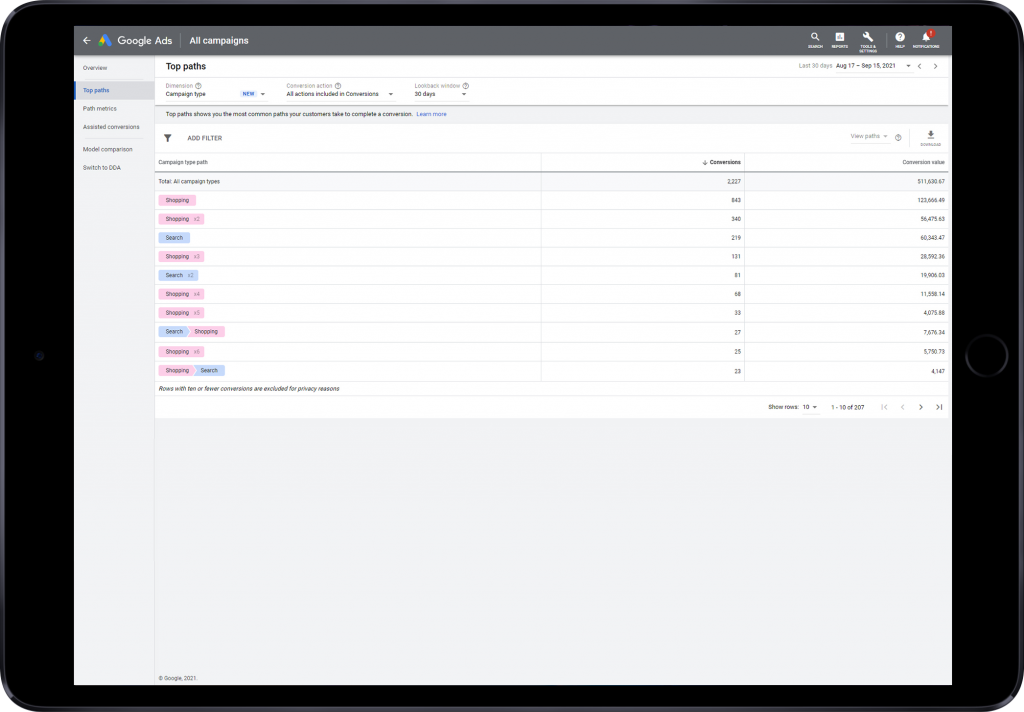
We now know that the largest portion of DDA would only be delayed, but what about the rest?
For this purpose, we apply step 2 of the model comparison. In the comparison tool, select your current attribution model in comparison to DDA and evaluate the resulting value distribution. Besides conversion numbers, you can even include CPA and ROAS.
In our example, we can see that, as expected, the largest share remains where it is now, but a redistribution takes place that would allocate more to the shopping campaign in this account. Search and Display would thus lose importance, which for us rather means a criterion against DDA. On the other hand, it also shows us where we should still improve.
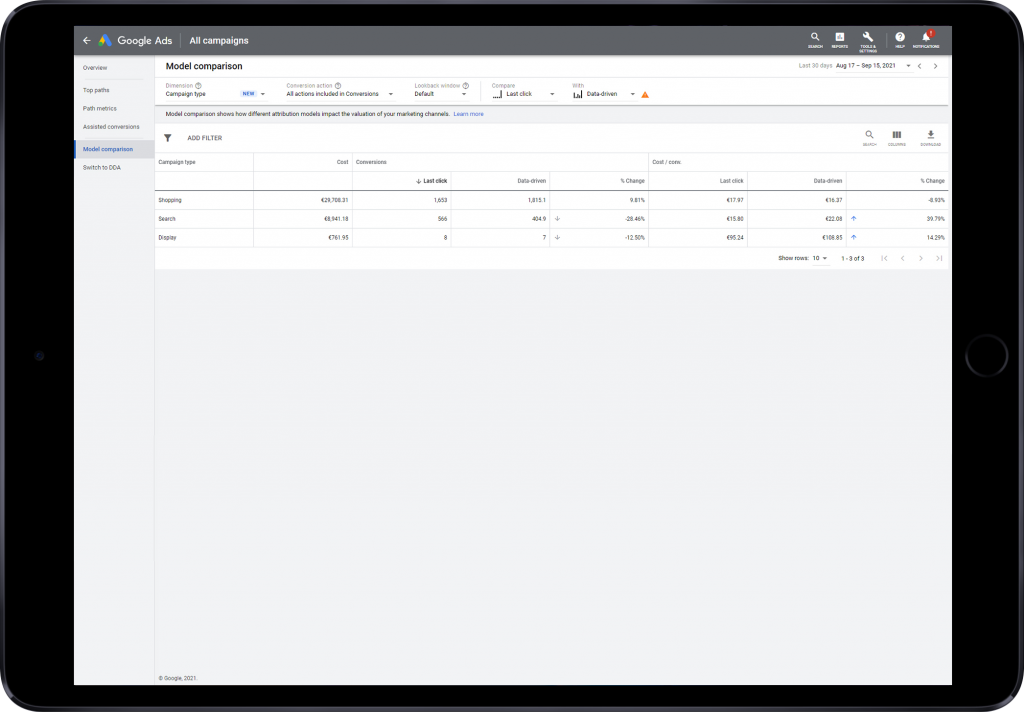
Which scenario would argue for a shift to data-driven attribution (DDA)?
In our analyses, we were only able to identify a clear gain from DDA if accounts appeared to function only via the brand campaign and all other measures via text, display and shopping ads appeared irrelevant.
In these accounts, in most cases, it was apparent that these new customer measures actually generated new customers and prepared most of the Brand Customer in conversion, but virtually left empty-handed due to Last Click modeling.
By switching, these advertising measures gain more importance and our Smart Bidding solution can thereby promote this development.
I have received mail and would like to respond
If one of your conversion actions has been selected for a switch, you can switch directly to DDA or opt out under the Attribution Tools in your Google Ads interface. To do this, simply go to “Switch to DDA” in your Attribution Tools and decide for or against it.
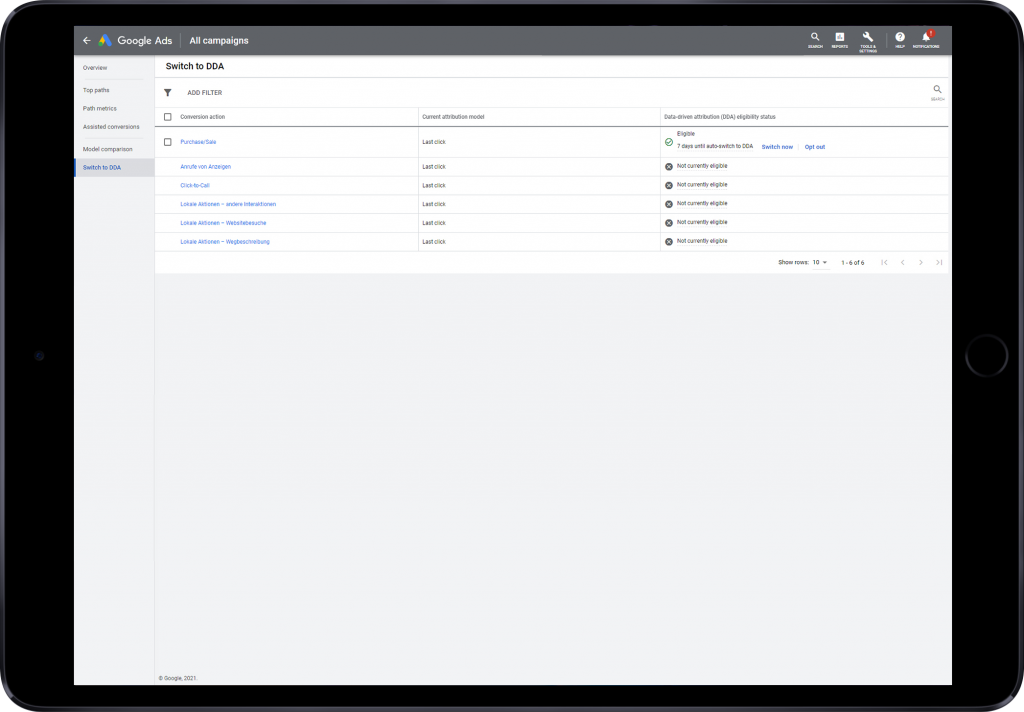
Conclusion
Switching to DDA does not necessarily mean something good or bad. We would therefore strongly advise you to get to know the customer journey of your users before switching and to compare models according to their actual performance shift.
If the benefit is minimal, we would tend to go with the older models, as time is money and the faster conversion numbers come into your account, the faster you can react to trends both positive and negative.
However, if your account is in a situation that mainly consists of underperforming campaigns that turn out to be performing, then switching despite the time lag could help you on the bottom line.
